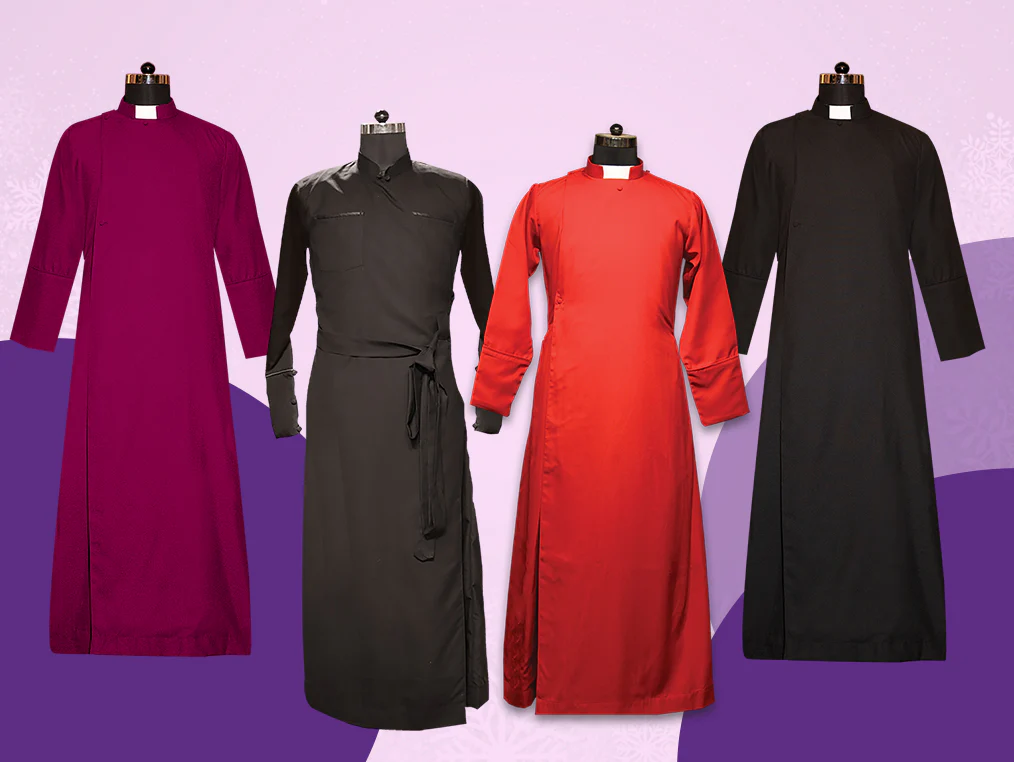The cassock, a long, buttoned robe worn by clergy and religious figures, has a rich history and significant cultural implications. Its use spans across various religious traditions and denominations, embodying both historical continuity and contemporary identity. This article delves into the cassock’s origins, evolution, and its role in modern religious practice.
Origins and Historical Context
The cassock traces its origins back to the Roman tunic, a simple, long garment worn by the Romans. As Christianity spread throughout the Roman Empire, early Christians adapted the Roman tunic, which eventually evolved into the cassock. By the Middle Ages, the cassock had become a staple of clerical dress, symbolizing the wearer’s religious commitment and separation from secular life.
In medieval Europe, the cassock was part of a broader ecclesiastical fashion that also included the chasuble, cope, and other liturgical garments. It was commonly worn by priests, monks, and bishops, each having slight variations in style and color. The cassock’s design was both practical and symbolic, reflecting the wearer’s humility and dedication.
Design and Variations
Traditionally, the cassock is a long, ankle-length robe with a high collar and buttons down the front. The color of the cassock can vary depending on the wearer’s rank and the specific religious tradition. For instance, in the Roman Catholic Church, black is the most common color for priests, while bishops may wear purple, and cardinals wear red. In contrast, Anglican clergy often wear a black cassock with a white collar, reflecting their own liturgical traditions.
The cassock’s design also varies across denominations and regions. In some Orthodox and Eastern Christian traditions, the cassock is known as the “Rasta” and is worn by monks and clergy alike. It often features distinctive features such as a broad belt and wide sleeves. In contrast, Protestant denominations may have simpler, more understated variations, aligning with their emphasis on modesty and practicality.
The Cassock in Modern Religious Practice
In contemporary religious practice, the cassock remains a significant symbol of clerical identity and tradition. For many clergy members, wearing the cassock is a way to visually express their commitment to their faith and their role within the religious community. The garment serves as a constant reminder of their spiritual responsibilities and their separation from secular life.
Despite its historical and symbolic importance, the cassock is not universally worn by all clergy. In some Protestant denominations and modern Christian communities, the cassock has been replaced by more casual or contemporary attire. This shift reflects broader changes in religious practice and attitudes towards formality and tradition. However, in traditions where the cassock remains prevalent, it is often worn during formal liturgical services, processions, and other ceremonial occasions.
The cassock also holds cultural and ceremonial significance outside of the liturgical context. For example, in some countries, the cassock is worn as part of formal academic dress for clergy who hold teaching positions in theological institutions. It is also used in various ceremonial roles, such as during the ordination of new clergy or at significant church anniversaries.
The Cassock and Identity
The cassock is more than just a garment; it is a symbol of religious identity and commitment. Its use can evoke a sense of continuity with the past, linking contemporary religious practitioners with their historical predecessors. For many, wearing the cassock is an act of devotion and a way to visually affirm their spiritual vocation.
In addition to its religious significance, the cassock also plays a role in community and cultural identity. In some regions, it is a recognizable symbol of the church’s presence and influence, marking the wearer as a representative of their faith community. This visibility can foster a sense of unity and belonging among members of the religious group.
Challenges and Adaptations
In an era of rapid social and cultural change, the cassock faces challenges in maintaining its relevance and significance. The trend towards more casual or diverse forms of attire in many religious settings reflects broader shifts in attitudes towards tradition and formality. Some argue that the cassock can appear out of touch with contemporary values of exclusivity and accessibility.
Nevertheless, the cassock’s enduring presence in many religious traditions underscores its lasting importance. Its continued use highlights the ongoing value of tradition and continuity in a rapidly changing world. For those who embrace it, the cassock remains a powerful symbol of faith, identity, and dedication.
In conclusion, the cassock is a garment steeped in history and significance. Its evolution from Roman tunic to contemporary clerical dress reflects broader changes in religious practice and cultural values. Despite the challenges it faces in the modern era, the cassock remains a potent symbol of religious commitment and identity, bridging the past with the present and embodying the enduring spirit of faith.
